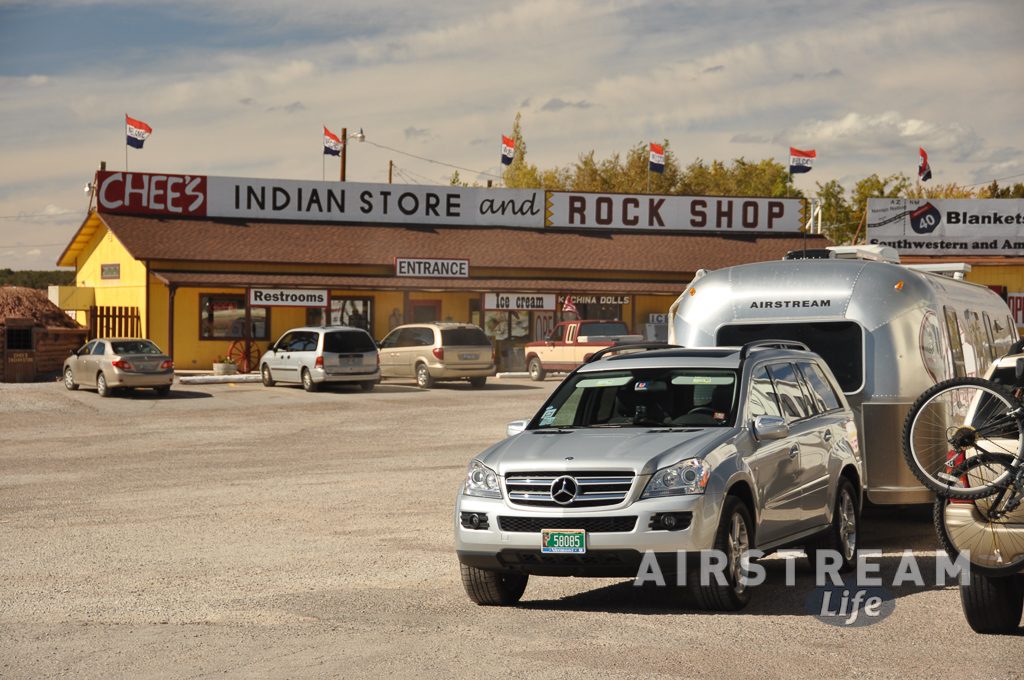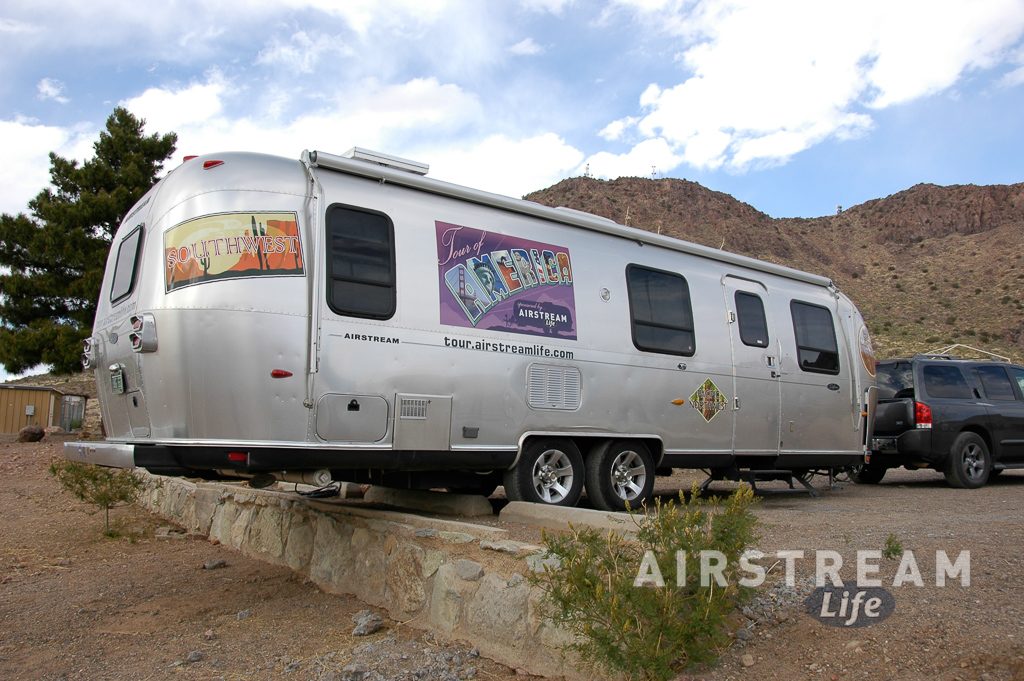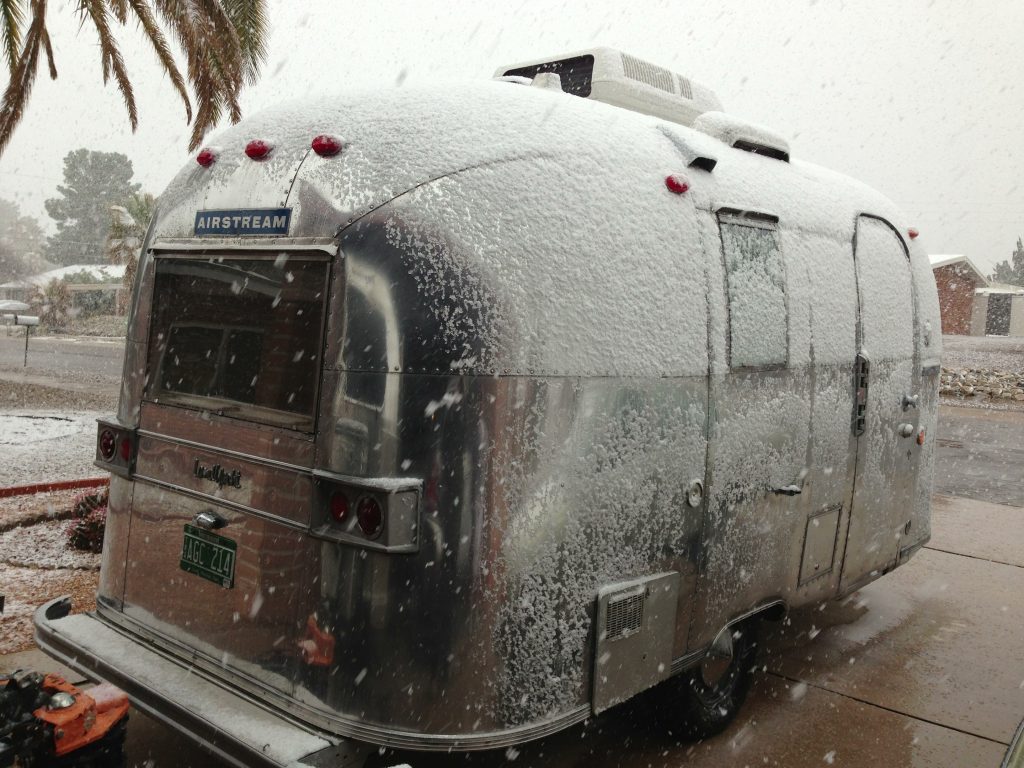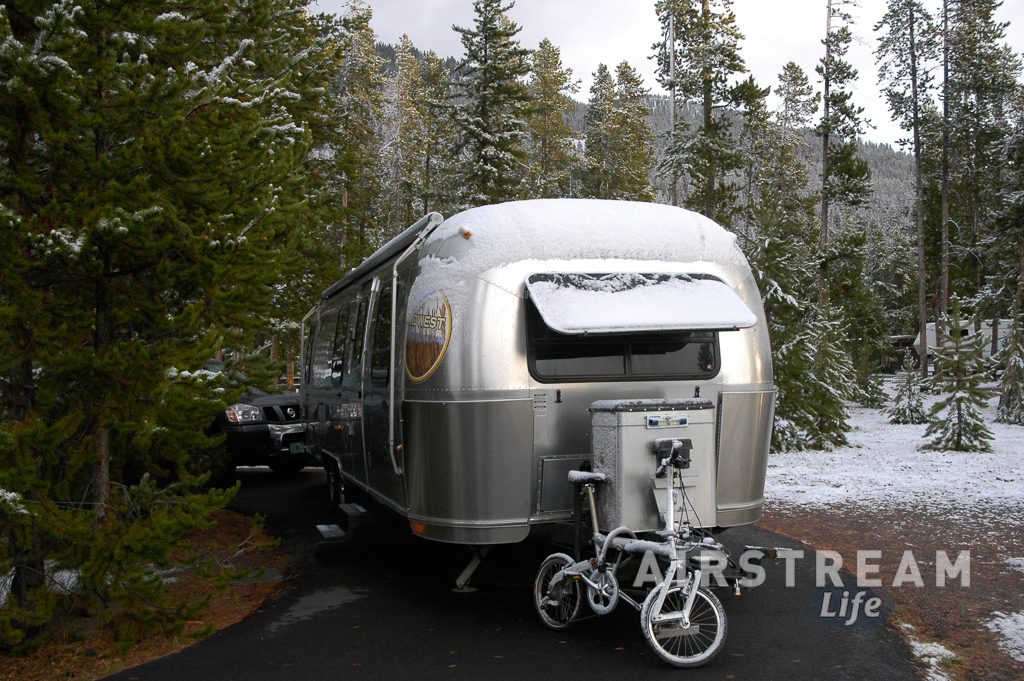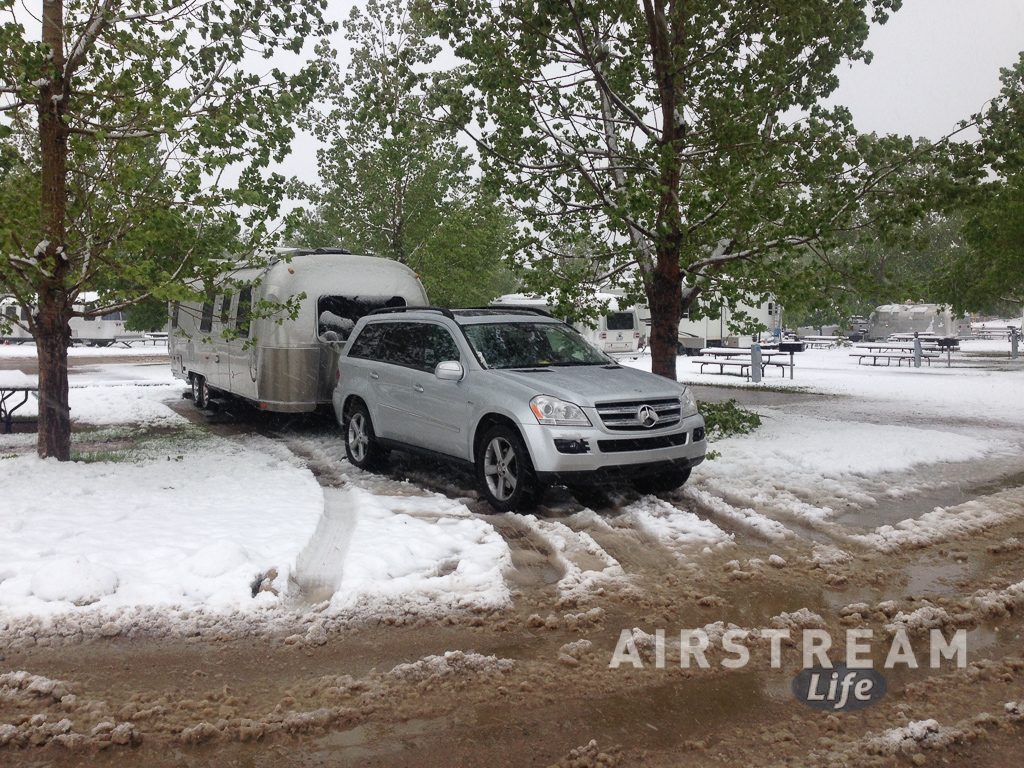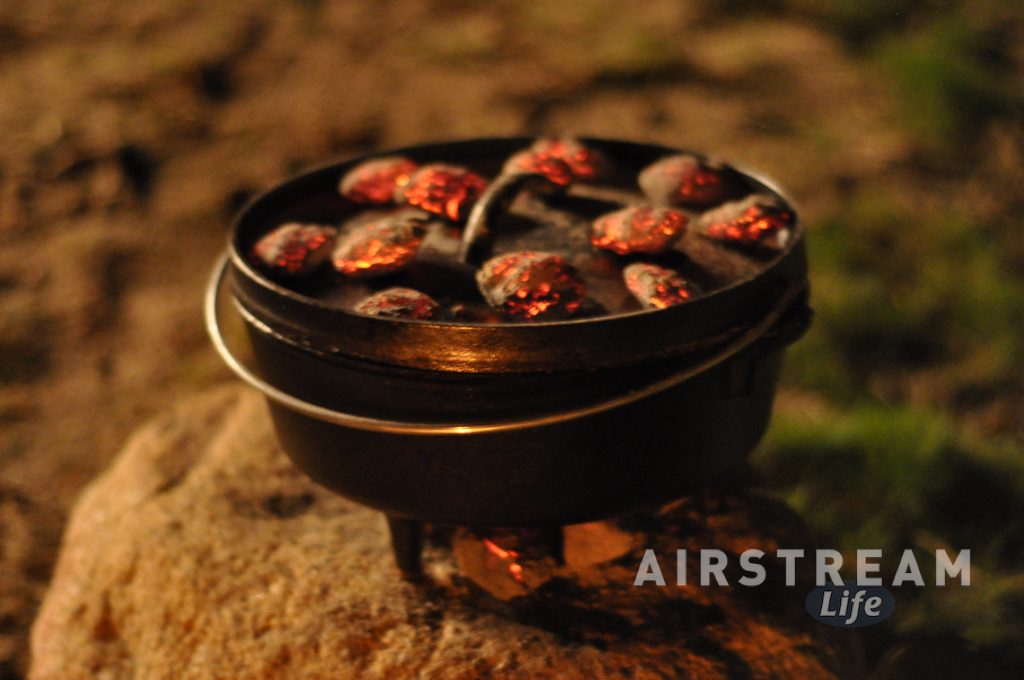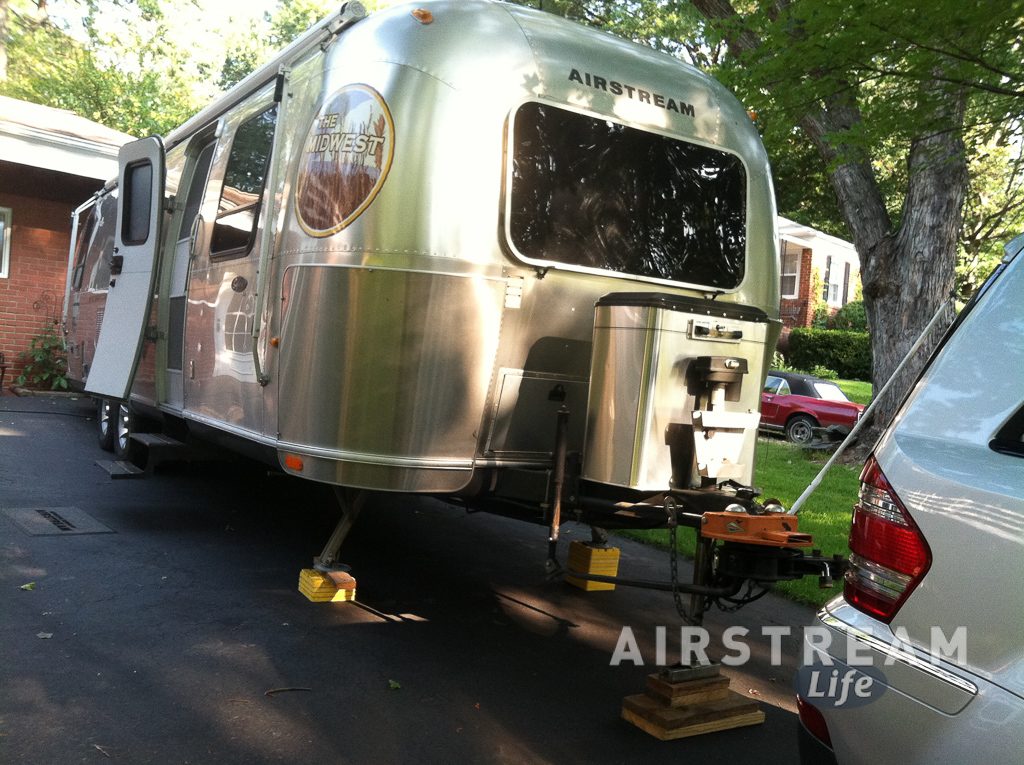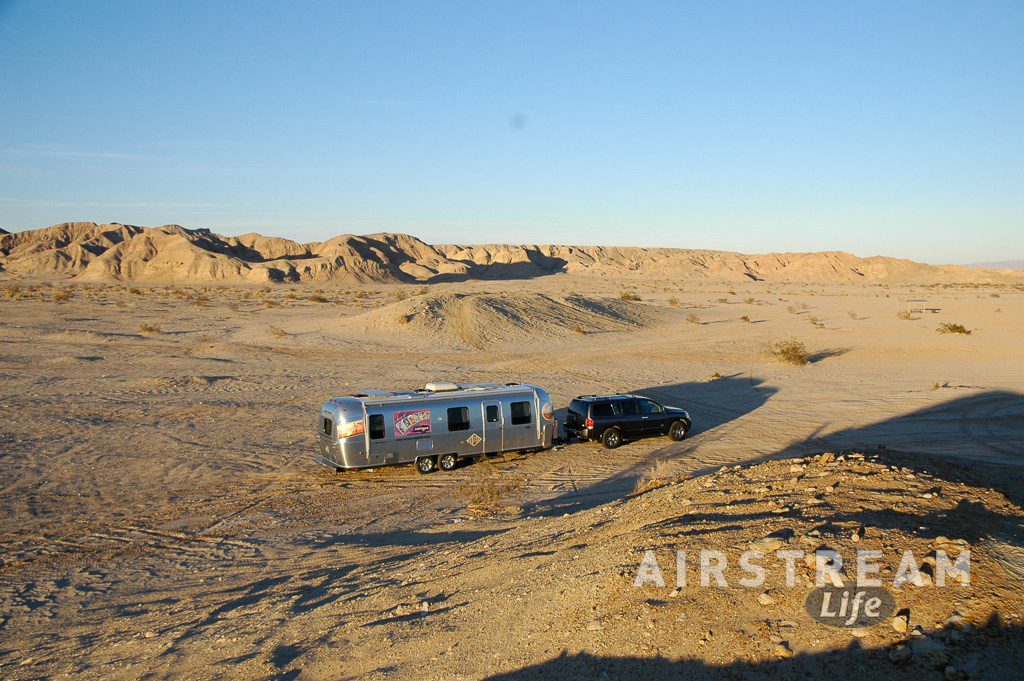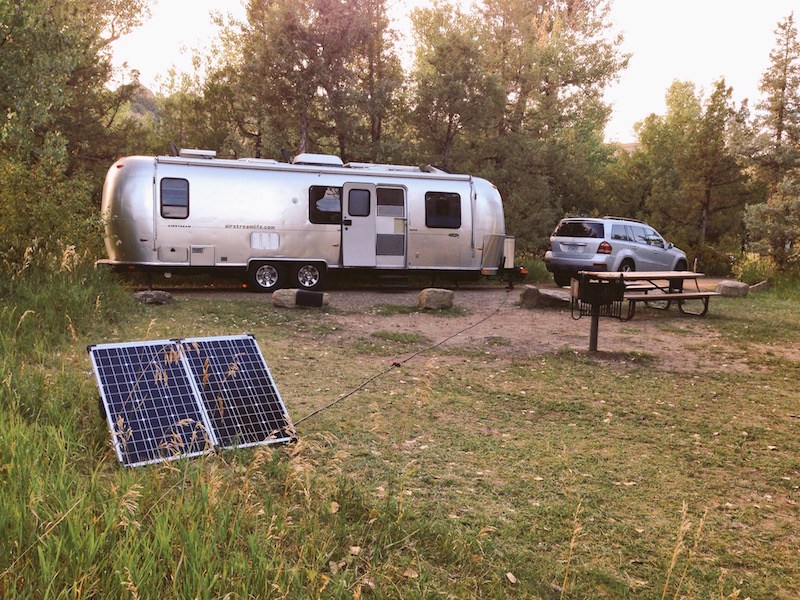2020 brought more new Airstreamers than any other time in the company’s 80-year history. That means a lot of people with a lot of questions. Mostly new Airstreamers want to know how to avoid trouble, so here’s a list of the biggest mistakes I see people making in their first year or two of ownership:
1. Driving too much
Everyone wants to start out with a bang — rushing away from home base to get to the first great destination. But your first couple of trips should be close to home, so you can have some time to get to know your Airstream.
There are lots of good reasons for this:
- The first trip will inevitably uncover things you forgot to pack, or things you need to practice before you’re fully comfortable (like hitching up, checklists, backing up, etc). Give yourself time to get the feel of living in an Airstream, and with your travel partner, before you take on the challenge of a longer trip.
- I hate to say it, but it’s also quite likely you’ll find something that’s not quite right on your Airstream and need to get home for a fix before you launch again. Better to have this happen while you’re close to home. Camping at home in the driveway or at a local campground is a good option just to test all the systems.
- Towing a trailer or driving a motorhome for the first few times is stressful. This can really exhaust you and start a trip on the wrong foot. Build up your endurance over a few trips.
- Airstreaming is about the places you stop, not the driving. Over the first few months, some enthusiastic new Airstreamers cover thousands of miles to “get to places” and then gradually they calm down and begin to stop at all the great little things that they’ve been passing by. That’s when they get into the rhythm of road traveling, and inevitably start to enjoy their travels more.
Here’s a fun exercise: look at a good atlas and notice all the interesting places that are within 100 miles of your home. Check out Airstream Club rallies in your area. Look for outdoor events where RV camping is possible (balloon fiestas, concerts, fairs, etc).
When you arrive, try to stay longer, talk more, meet more people, explore the small stuff — and save money by traveling less. If you have time, you might even enjoy weekly rates at campgrounds while you make day trips to the surrounding sights.
On long multi-stop trips, set a limit of no more than 100 or 150 miles on driving days, and no more than two or three travel days each week.
Also, don’t arrive at your campsite after dark. You’re much more likely to clip something (like an overhanging tree branch) in the dark or make an ugly mistake (a good example is coming, below). In the short days of winter this means you usually need to be off the road by 4:00 pm in order to have time to check in at the campground, get parked, and set up.
2. Not understanding the rig
These days, about 40% of new Airstreamers have never owned an RV before. If you’re one of them, you are facing a steep learning curve on your first few trips. Here are two common misunderstandings I see from first-time owners:
- [trailers only] Having an incorrectly adjusted hitch. Just because the dealer set up your hitch doesn’t mean it’s right. The difference between a correctly and incorrectly set up hitch can literally be the difference between life and death. So take some time to understand how the weight-distributing system works. Read the owners manual for the hitch you own, and check that it’s correct at a truck scale. The weighing procedure is explained in my book, “The Newbies Guide To Airstreaming”, which you got for free with your new Airstream.
- Confusing the black tank flush and the city water fill. We see this every year at Alumapalooza. These two outlets are right next to each other. Inevitably someone shows up on their first or second Airstream trip, after dark, and tries to hook up the water—but connects the hose to the black tank flush instead. BIG MISTAKE. The black tank will fill up with water, then it will either flood the bathroom through the toilet or come spouting out the rooftop plumbing vent in a “chocolate fountain.”
I think from these two examples you can see why it pays to learn everything you can about your Airstream!
3. Not using checklists or tools
I wrote about why checklists are important—especially for new Airstreamers—in “The Newbies Guide To Airstreaming” and provided a few sample checklists to get you started. Without a checklist you’re eventually going to forget something important, and it’s usually an expensive lesson.
You also need a basic toolkit. Things happen on the road and you can’t always get roadside assistance or a mobile RV tech to show up and fix them. I wrote a blog about some of the tools you should always have with you. You don’t have to be MacGyver, but you should learn at least a little about how your Airstream works so you can fix little things that otherwise might ruin your trip. It seems like there’s never a mobile RV tech around when you really need one.
4. Being afraid to camp without hookups
You can only see the country if you’re willing to get off the beaten path once in a while. Boondocking terrifies some people, but it’s actually fun, easy, and economical. It’s in those rustic national park, state park, Bureau of Land Management, National Forest, and Corps of Engineers campgrounds that you’ll find some of the most memorable outdoor experiences in the USA.
Tip: Get to know the capacities of your holding tanks, and how long they will last. This takes practice. The best way to learn to boondock is to just do it.
5. Not carrying water
Sometimes people will advise you to carry less water in order to improve your fuel economy. It’s a myth. If you are not climbing a mountain, 200 lbs of water (25 gallons) isn’t going to impact your fuel economy much. With travel trailers and motorhomes on relatively flat land, aerodynamics play a much larger role than weight.
Not having water means you must go where the water hookups are, and you can’t stop spontaneously at a delightful spot along the way. It also means that if you have a problem and can’t reach your intended destination, you’re out of luck for showers, cooking, and toilet. Yet I sometimes hear from other travelers that they recommend leaving the water tank empty and filling up only when they arrive. That’s like leaving your gas tank on 1/4 all the time and hoping there’s a gas station every 50 miles.
Tip: If you’re concerned about weight, just carry 10-15 gallons. That’s enough to get you through a night with careful conservation.
6. Relying too heavily on the GPS
GPS is a great tool and we love it, but it is no substitute for a good map, or common sense. The GPS database won’t tell you about all the things you’d like to see, either. But it will send you down a one-lane (or non-existent) back road to save 10 feet on the route.
Tip: Use the GPS as just one of several tools. Keep and use a good road atlas. Research things to do on the Internet and through local brochures before you plan your route. When approaching state or national parks, always follow the official brown signs rather than the shortcut your GPS is advising.
When traveling in the west always have a supply of drinking water in the truck, and be sure to ask locally for information before going on any dirt road. The Rangers and volunteers in state or national parks are a great source of information.
7. Being afraid to back up
Hey, I get it—backing up can be scary whether you’re driving a 12-foot tall motorhome or a 25-foot trailer. It does take practice to get good at it, even with a backup camera. But if you don’t learn this essential skill, you’ll be limited to “pull through” campsites only, which really limits your choices.
Also, sooner or later you’ll find yourself in a position where you must back up. That’s the worst time to have to learn. Work with a partner in a safe place and you’ll get the trick quickly enough. There’s more about this in “The Newbies Guide” too.
My #1 Tip: Keep Learning
There are certainly many more mistakes you can make in your first years of Airstreaming. Don’t be too fearful of that; The key is to keep learning as you go. When you make a mistake, it’s an opportunity to become a better Airstreamer. (I know that’s scant comfort if you’re looking at a dent, but most of the time things won’t be that dramatic.)
It’s usually helpful to talk to other Airstream owners at rallies or online. You’ll get all kinds of tips and great destination ideas. Just keep in mind that not all tips are good tips, so double-check them against other sources, like my books and this How To blog. (Shamelessly, I recommend getting a copy of “The (Nearly) Complete Guide to Airstream Maintenance” even if you aren’t planning to do much maintenance yourself. You’ll learn a lot about how your Airstream works.)
If you’re more of a visual learner, check out some of the videos we’ve posted. We keep adding new content regularly, so be sure to subscribe, too.
In any case, I think the best way to become an expert Airstream traveler is to get out there as often as possible. Keep traveling, and you’ll get wiser every day.
